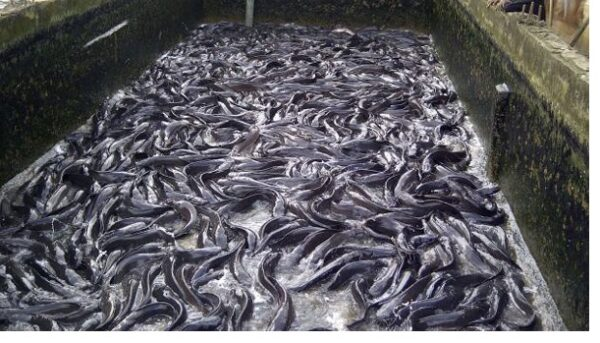Shipping: How To Communicate And Navigate Underwater Using Sounds

Shippers Guide is the learning page of MMS Plus. Here we answer the five W’s and H of several issues in the shipping industry. This week’s edition focuses on the uses of sound in communication, navigation and transmission of data underwater.
How Sound Can Be Used To Communicate Under Water
Scuba divers are trained to use hand signals to communicate with their buddies. They also use underwater writing boards, which allow for better communication. Both of these techniques require light, however. But what if the water is murky? Or if it is nighttime? Or if the divers are too far apart to see one another clearly?
Is it somehow possible to use sound instead? Special underwater communication systems have been developed to allow divers to talk to each other underwater. A transducer is attached to the diver’s face mask, which converts his or her voice into an ultrasound signal. A fellow diver has an ultrasound receiver, which accepts the signal and converts it back to a sound that the diver can hear, allowing for communication. The same system can be used for communication between the diver and a surface ship.
Can similar systems be used for communication between submerged submarines or between a submerged submarine and a surface ship? Radios will not work, because radio signals cannot propagate any significant distance through water. Acoustic systems called underwater telephones have been developed for this purpose.
U.S. Navy submarines use a specialized telephone system to communicate underwater. It works much like an AM radio, except that it transmits and receives sound waves instead of transmitting and receiving radio waves. Similar to land-based systems, underwater telephone systems use microphones and audio amplifiers.
How Sound Can Be Used To Transmit Data Underwater
Computers use digital data to transmit and receive information including e-mail messages and Internet web pages. Is it possible to transmit this kind of data underwater? Can a submerged submarine send and receive e-mail? Submarines do not have telephone or cable connections, and radio signals do not propagate underwater, so a submarine relies on sound to send and receive digital data.
The preceding section explained how underwater telephone systems use sound to communicate underwater. These systems produce very low quality signals, similar to poor telephone connections that cellular phones often experience. Telephone modems allow computers to transmit and receive information over telephone lines; however, they do not work very well with poor connections. Special acoustic modems that can successfully transmit digital data underwater have been developed.
These modems convert digital data into special underwater sound signals that can be transmitted between two submerged submarines or between a submerged submarine and a surface ship. These digital signals can represent words and pictures, just as on land, allowing submarines to send and receive e-mail. Underwater acoustic modems are relatively slow compared to telephone or cable modems on land. Nonetheless, this technology is very important because it provides an accurate and efficient means to send and receive data underwater.
In addition to submariners, researchers also need to send and receive data underwater. Oceanographers use acoustics to control underwater instruments and acquire the data that they collect remotely. This technology can also be used to control small, unmanned submarines, called Autonomous Undersea Vehicles (AUV’s), and get data back from them in real-time. These vehicles are currently under intensive development and are beginning to be widely used for oceanographic research and other purposes.
Underwater data links can also be combined with satellite data links to provide data in real-time from instruments on the seafloor to scientists ashore. One application of this technique is to provide early warnings of tsunamis generated by undersea earthquakes. Tsunami waves are generated when an earthquake causes the seafloor to move. They can cause great damage when the waves build as they come ashore. Pressure sensors that are deployed on the seafloor can detect tsunamis. The U.S. National Oceanic and Atmospheric Administration (NOAA) Deep-ocean Assessment and Reporting of Tsunamis (DART) program has installed bottom pressure sensors near regions with a history of tsunami generation, to measure waves as they spread. To date, NOAA has created an expansive network of 39 DART buoy stations, with 32 located in the Pacific and 7 in the Atlantic Basin.
Pressure data are transmitted to a near-by surface buoy via an acoustic data link using underwater modems. The data are then relayed to researchers on land in real-time via satellite. Researchers can also request real-time data independent of the automatic detection system. The data are used to provide early warnings of a tsunami before it comes ashore. To view an animation that shows how the system works, please see this NOAA animation for the DART System.
Another practical example for the use of acoustic communication technology is in the search for underwater objects. A robot crawler carries a modem, a camera, and a digital signal-processing unit. The robot, transversing the seafloor, searches for an object. When an object is found, the robot sends an acoustic signal to a ship or shore based station. The robot can then be commanded to take a still frame photo, compress it and transfer the image to an acoustic signal that is sent back to the investigator. This technology will allow archaeological expeditions to save thousands of dollars in diving time.
How Is Sound Used To Navigate Underwater
Underwater sound can be used to help ships navigate their way through the water. Sound can also be used to navigate remotely operated vehicles (ROVs), manned submersibles, and oceanographic equipment.
A basic underwater navigation system uses a hydrophone and an acoustic tracking beacon. The hydrophone is attached to a boat, below the water and works like an antenna. The beacon, somewhere below the boat, transmits a signal that is picked up by the hydrophone. The system calculates the range (distance) and bearing (horizontal direction) to the beacon. The position of the beacon is determined relative to the boat. If the exact location of the boat is known, then the exact location of the beacon can be calculated.
A more precise underwater navigation system uses several beacons. A ship or ROV has an acoustic transducer that combines a transmitter and a receiver. Beacons that make a pinging sound are spread out on the ocean floor in known locations. These special beacons are called transponders. The transducer sends out signals to the underwater transponders. Each transponder responds with a unique sound of its own. These replies are picked up by the transducer. Computers then calculate the exact position of the ship or ROV by determining the distance from the beacons and using simple geometry and basic math.
How position is calculated
Underwater positioning is based on the basic principle:
Distance = Speed x Time, where Speed is the speed of sound in water.
The system measures the amount of time between the initial ping (sent from the transducer) and the return ping (received from the transponder) and calculates the distance from that transponder:
|
|
The product is divided by two because the measured time is the round-trip time (from the transducer to the transponder and back to the transducer).
Once you get 3 distances from 3 known points, you can calculate the position using a method called triangulation. Computers calculate the unique point where all three distances measured from the transponders intersect.
Many things affect underwater navigation. The speed of sound changes with temperature, so it must be measured in different areas and at different times throughout the day. Differences in temperature in the water result in thermoclines- regions of the water column that separate warm surface water from cold deep water. These thermoclines may deflect the sound. In addition, there may be noises from the ship or other objects that interfere with measuring the underwater signals.











